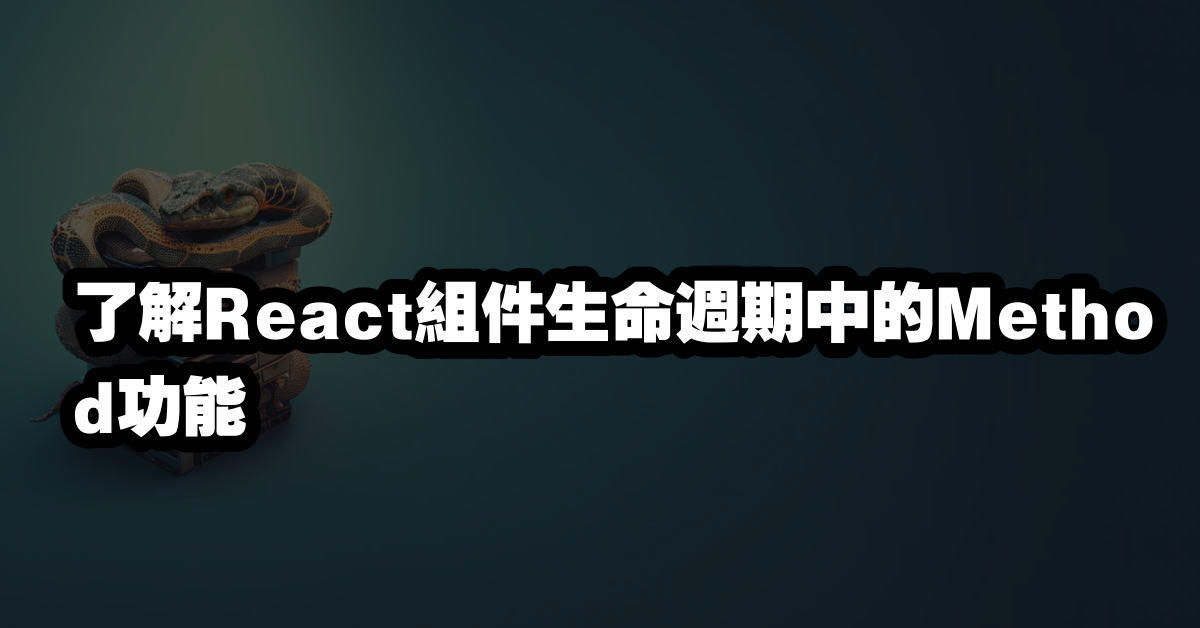
目錄
React 組件生命週期(lifecycle methods)
React 組件的生命週期(Lifecycle)是指組件在應用程式中的一個特定時期,它們可以在每個時期執行特定的行為。React 的生命週期可以分為三個階段:初始化、更新和消滅。
初始化
在初始化階段,React 組件會執行以下方法:
constructor():在組件被建立時會被執行,它會初始化組件的狀態(state)和綁定方法(bind)。getDerivedStateFromProps():在接收到新的 props 時會被執行,它會根據新的 props 更新組件的狀態(state)。render():在組件被更新時會被執行,它會根據 props 和 state 產生要顯示的元素。componentDidMount():在組件被掛載(mounted)後會被執行,它會讓你可以在組件被掛載後執行非同步操作。
更新
在更新階段,React 組件會執行以下方法:
getDerivedStateFromProps():在接收到新的 props 時會被執行,它會根據新的 props 更新組件的狀態(state)。shouldComponentUpdate():在接收到新的 props 或 state 時會被執行,它會回傳一個布林值,告訴 React 是否要繼續執行更新的流程。render():在組件被更新時會被執行,它會根據 props 和 state 產生要顯示的元素。getSnapshotBeforeUpdate():在更新前會被執行,它會回傳一個物件,這個物件會被傳入 componentDidUpdate()。componentDidUpdate():在更新後會被執行,它會讓你可以在組件更新後執行非同步操作。
消滅
在消滅階段,React 組件會執行以下方法:
componentWillUnmount():在組件被消滅前會被執行,它會讓你可以在組件被消滅前執行清理工作。
React 的生命週期方法可以讓你在組件的不同時期執行特定的行為,讓你可以更有效率的開發 React 應用程式。
總結
React 的生命週期方法可以讓你在組件的不同時期執行特定的行為,讓你可以更有效率的開發 React 應用程式。它們可以讓你在組件被建立、更新和消滅時執行特定的行為,讓你可以更有效率的開發 React 應用程式。
推薦閱讀文章
推薦閱讀文章
<a href="https://www.taniarascia.com/getting-started-with-react/" target="_blank" rel="noopener">Getting Started with React</a><br>
<a href="https://reactjs.org/docs/react-component.html" target="_blank" rel="noopener">React Component</a><br>
<a href="https://reactjs.org/docs/react-component.html#the-component-lifecycle" target="_blank" rel="noopener">The Component Lifecycle</a><br>
<a href="https://engineering.musefind.com/react-lifecycle-methods-how-and-when-to-use-them-2111a1b692b1" target="_blank" rel="noopener">React Lifecycle Methods: How and When to Use Them</a><br>
<a href="https://blog.bitsrc.io/understanding-react-component-lifecycle-methods-e7ab349c5b6e" target="_blank" rel="noopener">Understanding React Component Lifecycle Methods</a
